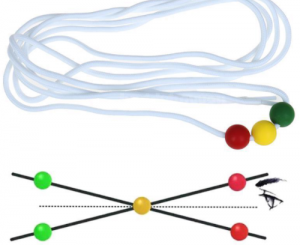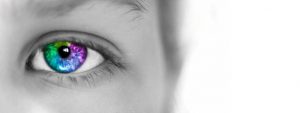According to statistics published in the Annals of Ophthalmology (Sept. 2001), 60 million American adults experience symptoms of a binocular vision disorder – that’s over 56%!
What are binocular vision disorders and how do they affect the people who have them?
Learn more with our top 6 FAQs.
Q1: What is binocular vision?
In a healthy visual system your two eyes work in unison to focus on a single object or image, sending visual information to the brain, which interprets the information.
The process of the brain taking the visual information from each eye and combining that information into a single and clear 3D image is called ‘binocular vision’.
This process is responsible for our ability to see accurately in three dimensions, as well as our sense of distance and depth perception.
Difficulties with binocular vision can interfere with a child’s ability to learn, as well as an adult’s ability to function in the workplace.
Severe and chronic issues can result from these visual disorders, including lazy eye (amblyopia), eye turns, migraine headaches, nausea, vertigo and more.
Q2: How do I know if I have a binocular vision disorder?
The best way to know if you have a binocular vision disorder is to undergo a binocular vision assessment.
If you have any of the following symptoms, it may be worth your time to consult with your eye doctor:
- Problems with attention or concentration
- Difficulties with reading or learning
- Headaches
- Recurring problems with balance and mobility
- Double vision
- Eyestrain
- Poor coordination or spatial judgment
Q3: What is amblyopia?
Amblyopia, is known as lazy is the most prevalent single-eye vision condition in the world— affecting up to 1 person in 20.
Lazy eyes can develop when childhood vision conditions such as eye turns (strabismus) go untreated, causing visual input from both eyes to be unequal.
Lazy eyes make it difficult, even impossible, for the brain to combine the visual information from both eyes into a single clear image. As a result, the brain begins to ignore signals from the weaker eye.
Conditions that deprive one eye of sight for an extended period of time, or cause one eye to have a significantly higher refractive error than the other, can also result in amblyopia.
Symptoms of amblyopia include:
- Reading or learning problems
- Reduced attention or concentration span
- Poor focusing skills
- Lower contrast sensitivity
- Visual-motor challenges
- Difficulty with depth perception
SEE RELATED: What Are Visual Efficiency Problems?
If you or your child has any vision difficulties, schedule an appointment with an eye doctor to see if they may have a binocular vision problem.
Q4: What is strabismus?
Strabismus, also known as eye turn, wall eye or squint, is an eye condition where the eyes are not aligned properly and one points in a different direction to the other.
With strabismus, one eye will be either esotropic (inward facing), exotropic (outward facing), or hypertrophic (upwards facing) compared to the other eye.
A person with strabismus can experience the eye turn either intermittently or all the time.
Those whose strabismus is constant can expect to have problems with depth perception and difficulties developing proper binocular vision.
For strabismus that comes and goes, people may experience double vision and eye fatigue, and words may appear to move on the page as they try to read.
If strabismus is left untreated, it can cause the development of more severe vision conditions, including amblyopia.
Q5: What are the symptoms of a binocular vision problem?
This is essential for the eyes to be able to send consistent visual information to the brain, where it is interpreted and combined into a single cohesive three-dimensional image.
If a person has a binocular vision issue, the brain struggles to combine the input from the two eyes eyes and symptoms may include:
- Reading or learning difficulties
- Poor attention or concentration
- Headaches
- Diplopia, or double vision
- Reduced spelling or comprehension abilities
- Words appear to move on the page
- Challenges with coordination or depth perception
- Motion sickness
Q6: Is there treatment that can help with a binocular vision disorder?
Yes!
Vision therapy is often prescribed to treat all binocular vision dysfunctions.
Vision therapy is a scientifically backed regimen of in-office and at-home eye exercises that aim to train your brain and your eyes to work together more effectively and efficiently.
These exercises, along with specialized vision therapy aids, can help organically reduce or eliminate headaches, double vision, dizziness and other symptoms caused by a binocular dysfunction.
LEARN MORE: Guide to Vision Therapy
Schedule an appointment with an eye doctor to see if you can benefit from vision therapy.
Binocular vision problems mean both eyes are not working together and can result in double vision, eye strain – leading to reading or learning difficulties or attention problems.
Vision therapy is often the most effective treatment for binocular vision problems.









